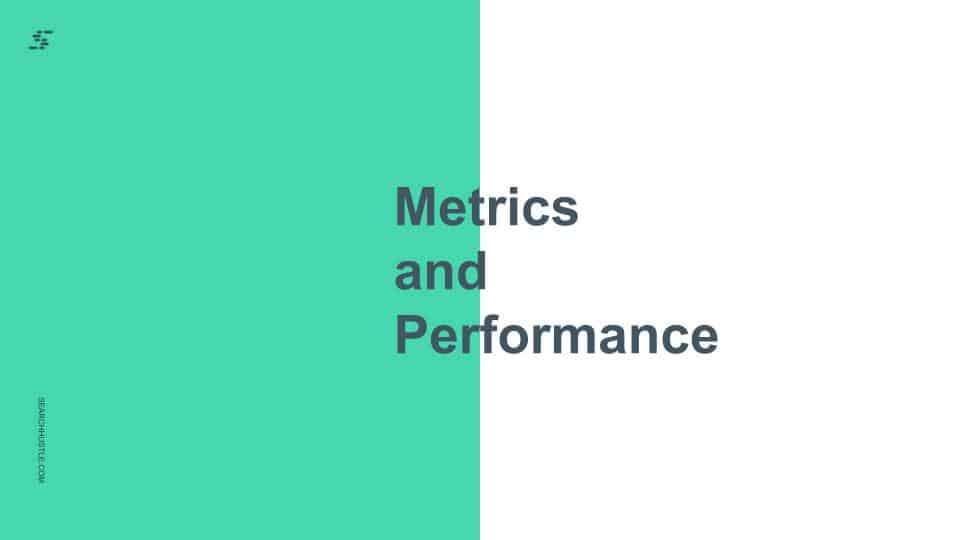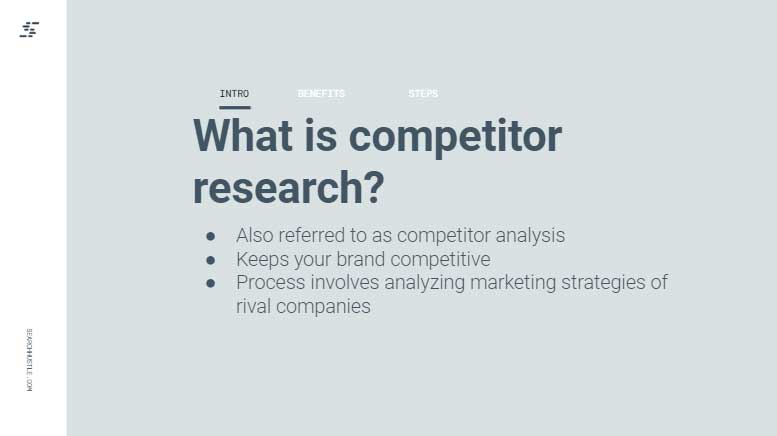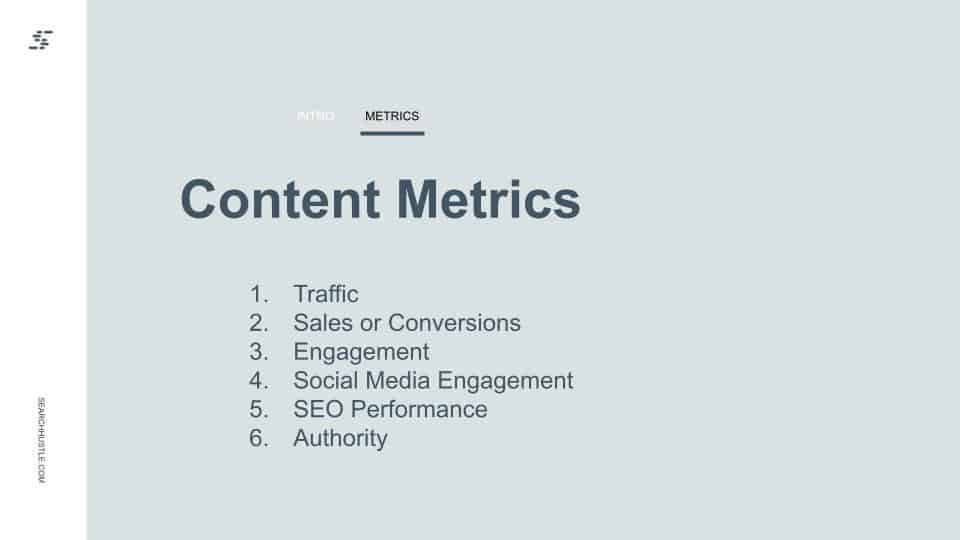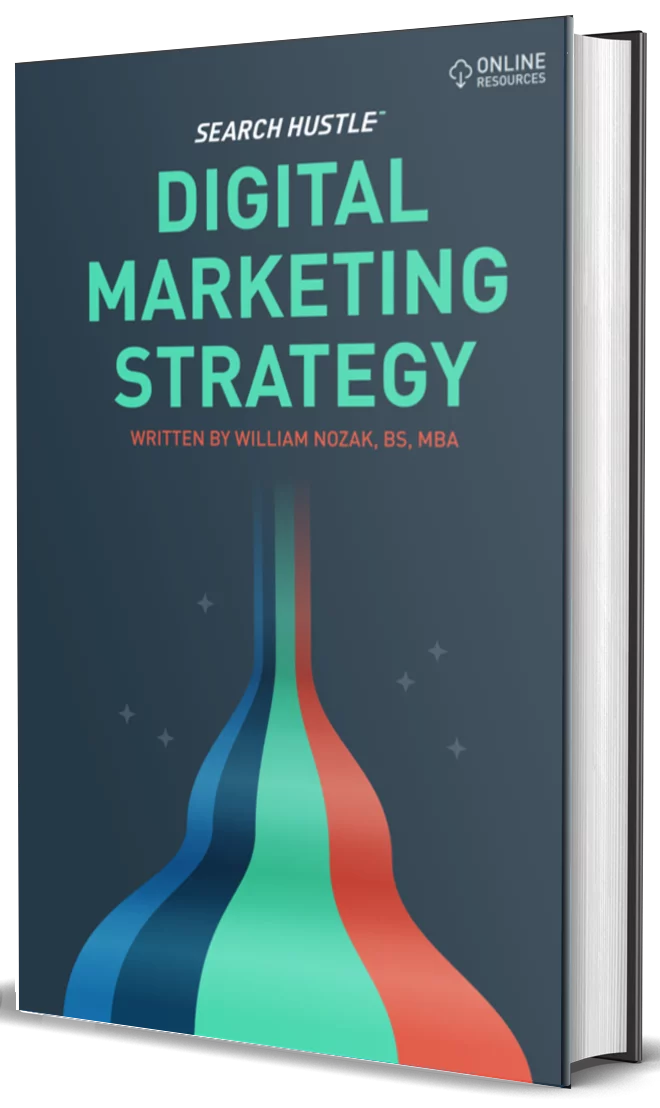Metrics and Performance
Follow the data to find performance

There’s no point in having content if you do not track its performance. Therefore, pay attention to each post’s metrics, so there is no question of how well it is doing and with whom it is resonating. To do that, one must understand how metrics work.

What Are Content Metrics?
Basic content metrics are data points that detail how a piece of content is consumed. It allows the author or publisher of the resource to track the performance of any piece of content. For example, let’s break down the specific tracked metrics to understand content performance.
1. Traffic
For those undertaking content marketing, traffic is one of the ultimate metrics to track. Traffic, in a nutshell, is how many people view the content and the website. Traffic is broken down into several categories, which we will review now.

Users
How many people are looking at the content, and who are they? We need to find out more about their behaviors. Where did the users come from, and where did they go once they viewed the content? How many subscribers, followers, or repeat viewers are there? How many visitors are new vs. returning?
Pageviews
This is the total number of site visits. The higher the number, the more people have visited the site. This includes everyone, no matter how many times they’ve viewed the page.
Unique page views
Unique page views identify how many unique visits are made to a site. For example, if a person visits the site a dozen times, they are only counted once.
2. Sales or Conversions
This is an incredibly powerful metric. It identifies how many users viewed the content and performed a conversion action. For example, we can calculate the conversion rate by dividing the number of actions by the number of total viewers. For example, having 100 users and two deals results in a conversion rate of 2%.
3. Engagement
Engagement is a straightforward metric that quantifies a piece of content’s effectiveness. It helps us measure how well the content connects with users and readers. The better the connection, the more popular and engaged the users who read the content will be.
In order to track social media engagement, take a look at how many likes, shares, and clicks the content is generating. This can reveal how much the content resonates with social media users, and how broad the impact the piece of content is having in relation to just how many have viewed it.
5. SERP Performance
This metric relates to impressions, clicks, click-through rate, keyword volumes, and positions.
6. Authority
This is the metric that represents how well the content and page rank with a search engine. Consider this to be how trusted your content and site are, and it is usually a score that is received out of a rank of 100. The best way to keep this score high is to provide regular, topical, and factually informative content. The higher the score, the better off the content is (Complete Guide to Evergreen Content).
Additional Factors That Impact Content Success
Before optimizing content for engines, you must first understand what factors contribute to ranking. Once you have a firm grasp on these factors, any optimizations you make will stand a better chance of impacting the ability of the piece to move up the SERPs. We’ve already discussed quality, titles, usefulness, uniqueness, and frequency.
There are a few additional KPIs to keep in mind. Remember, organic links are like “network marketing.” Your network is one of your best resources for sales. Create content that gains organic links, but also be willing to write content and outreach for additional web properties that can link back to your primary site.
Dwell Time
While Google considers dwell time an indirect ranking factor, it is still important. Dwell time is how long a user remains on a web page.
Dwell time starts from when a user clicks on the site to when the user leaves the page. This metric informs search engines how valuable a user finds the content. Look at it this way; the longer a user stays on a page perusing the content, the more helpful the user must find the content.
Search engines like Google consider dwell time an indirect metric because it can be subjective. Every site uses a different content strategy. For instance, a site that utilizes short-form content or posts fewer blogs to the site will naturally have a shorter dwell time than a site that focuses on 2,000-word blog posts.
In short, don’t alter all of your content to improve this metric if it doesn’t mesh with your content strategy.
Page Speed
Around 40% of people will abandon a shopping cart if it takes longer than three seconds to load. For each second of delay in page loading, you could lose up to 7% of your conversions.
There are a variety of elements that impact page speed:
- Large image files
- Redundant coding
- Overuse of plugins
- Bad plugin configurations
- Shared servers
Mobile Responsiveness
As of July 2019, Google switched to mobile-first indexing.
This means Google indexes and ranks content from the mobile version of the site. As such, your website needs to be mobile-friendly. Remember that eliminating imagery and content from the mobile version can reduce SERP positioning.
Google defines several best practices to follow to ensure a site is mobile-friendly:
- Ensure Googlebot can access and render content.
- Content should be the same on desktop and mobile.
- Check structured data and ensure it’s the same on mobile and desktop.
- Include the same metadata on both versions of the site.
- Check the placement of ads.
- Use best practices for visual content.
Index Date
Indexing is when a search engine finds content and adds it to its index. One of the factors that search engines use when deciding which content is most relevant and accurate is the date by which the search engine indexed the content.
To positively impact the index date, a website can implement historical optimization. By updating older blog posts with new data, bots will crawl and reindex the page. The crawlers look at the updated content and decide where the site belongs in the SERPs.
Recent Data
When searching for an answer to a solution, you don’t want outdated information cited from more than five years ago. So when writing blog posts, it’s always best to be a reputable source with the most up-to-date data.
Google considers recent data an indirect ranking factor; and wants sites to offer relevant, accurate information. Updating information on a website allows search engines to recrawl and reindex the fresh content. Beyond that, using current data will improve the user experience and, hopefully, improve our metrics.
Digital PR
From brand awareness to SEO, the benefits of digital PR are undeniable. For now, we’re going to focus solely on what it is. Short for digital public relations, this online marketing strategy is utilized to gain backlinks, social media mentions and improve SEO.
Digital PR includes things like:
- Online publicity
- Obtaining backlinks
- Customer reviews
- Responding to journalist requests (e.g., HARO)
- Affiliate marketing
- Blogging outreach – being featured in other’s blogs
- Online press releases
Essentially, it’s an evolved form of PR focused only on the online world and improving brand awareness.

Ready to Take Your Search Hustle Further?




4. Social Media Engagement